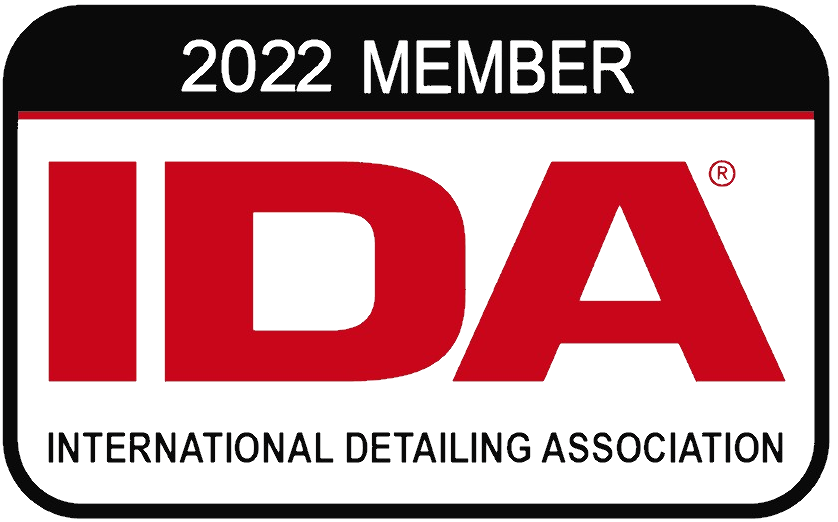Help | Frequently Asked Questions
Frequently Asked Questions
Designed specifically for car care professionals who want to enhance their expertise in ceramic coatings, paint protection films (PPF), and window films. Whether you’re an experienced detailer or just starting out, this resource provides clear, in-depth answers to common questions about our industry-leading products, application techniques, and business growth opportunities.

Ceramic Coating

Window Films

Marine

DIY

PPF

Home Care
Ceramic Coating
Ceramic coatings offer a range of benefits, including a strong protective layer against scratches, chemical damage, pollutants, oxidation, and UV rays. They provide a high-gloss finish, enhance water repellency making the car easier to clean, and can significantly prolong the lifespan of a vehicle’s paint and other surfaces. Some specialized coatings even offer protection for interior textiles, tires, and other materials.
There are several types of ceramic coatings, including:
- Quartz Pro 9H: Provides up to 5 years of protection with a glossy, hydrophobic surface and grade 3 chemical resistance, defending against chemicals, UV rays, water, oil, scratches, and oxidation.
- Graphene Pro 10H & N1: Offers lifetime protection with superior resistance to chemicals, scratches, and pollutants, forming a substantial 1000nm defensive layer.
- Graphene Pure: Infused with advanced graphene technology, providing 10H hardness, exceptional durability, chemical resistance, and water repellency, marking it as a top option for vehicle protection.
- Quartz Ceramic Coating: A 9H nano-ceramic coating that enhances reflective properties and offers protection against chemicals, scratches, pollutants, oxidation, corrosion, and UV rays.
The longevity of ceramic coatings varies depending on the type. Quartz Pro 9H offers up to 5 years of protection, while Graphene Pro 10H & N1 is designed for lifetime protection. Graphene Pure is mentioned to provide remarkable longevity and durability, though specific timelines aren’t given, however the implication is that it lasts a very long time.
A graphene coating is a coating that has been chemically bonded with graphene particles to reinforce it. This makes the resulting structure significantly harder, and more resilient to damage. With the graphene effectively acting as a molecular rebar to reinforce the SiO2.
10H refers to how hard the coating is. This determines how hard the coating is to scratch. We use the industry standard Graphite Scale of Hardness, with 10H being the highest possible rating. This has been independently verified, and we offer access to documentation on this upon request.
N1 is how smooth the surface is, with N1 being the smoothest possible in this product category. A smooth surface not only looks incredible, but it also helps to prevent particulate matter and debris such as dust from sticking to the surface. This has been independently verified, and we offer access to documentation on this upon request.
The hardness scale (like 9H and 10H) is a measure of the coating’s resistance to scratching and abrasion. A higher rating indicates a harder coating that can withstand more physical stress. Graphene Pure, with its 10H hardness, is very durable and resistant to a wide variety of potential damage.
Graphene Pure stands out due to its advanced graphene infusion, which creates an exceptionally strong 10H hardness shield. The graphene reinforces the coating’s bonds, making it highly resistant to both physical and chemical threats, similar to rebar in concrete. It provides unmatched durability, longevity, chemical and water repellency, a deep shine, and keeps vehicles cleaner for longer.
Ceramic coatings offer numerous benefits, including: * Protection from UV rays, chemicals, scratches, and pollutants. * Enhanced aesthetic appeal with a deep, glossy shine. * Water-repellency, keeping vehicles cleaner for longer. * Increased durability and preservation of the vehicle’s finish. * Long-term cost savings by reducing the need for frequent detailing.
While it is possible to apply a ceramic coating yourself, it’s often recommended to have a professional do it. Proper preparation and meticulous application are crucial for achieving the best results, and professionals have the expertise and tools for proper and safe application.
The ceramic coating application process involves several key steps:
- Preparation: Plan your work and apply the coating in small sections, and consider working with a team.
- Application: Dab the applicator cloth with the ceramic coating and work on one section at a time.
- Setting: Allow the coating to set for a brief period, generally 2-5 minutes.
- Wipe Down: Gently wipe the coated area with a designated towel to remove any excess product.
- Curing: Allow the coated vehicle to cure for at least 3 hours in a covered area without moving it.
- Final Touch: Wash the car about one week after application to optimize the coating’s effectiveness.
The longevity of a ceramic coating varies depending on the specific product and application. Some coatings offer protection for up to a year, while others provide 3, 5, 7, or even a lifetime of protection. Factors like environmental conditions, driving habits, maintenance practices, and the quality of the initial application influence the coating’s lifespan.
Yes, ceramic coatings can be applied to various surfaces beyond the paint, including gel coat, metal, wheels, plastic trims, glass, and even tires and rubber components. There are specialized coatings designed for specific materials and purposes, each providing distinct benefits, such as heat resistance for calipers or UV protection for plastic trim.
Ceramic coatings designed for mobile detailing offer ease of application, quick curing times, and the ability to be applied in both indoor and outdoor environments, even in exposed areas. They provide the durability and protection needed for vehicles on the go and are often formulated to be compatible with on-site application methods, making them efficient for mobile detailing businesses.
Advanced ceramic coatings offer protection not only for exterior surfaces, but also for interior components. Textile coatings protect fabric and textile surfaces from spills and stains. Coatings can also enhance the look and protect tires, rubber, and plastic trim from wear and fading. Additionally, coatings are designed to protect glass and brake calipers from external factors, enhancing the overall aesthetics and maintenance of the vehicle.
Ceramic coatings cure in two stages:
- Initial Cure: Within 24–48 hours, the coating hardens enough to resist light contact and water exposure.
- Full Cure: The coating fully bonds to the surface within 7–14 days, reaching its maximum hardness and chemical resistance.
- High humidity (>70%) can slow down curing and increase the risk of streaking or water spotting.
- Low temperatures (<50°F/10°C) can extend the curing process, reducing bonding efficiency.
- Optimal conditions are 50–80°F (10–27°C) with moderate humidity.
Yes. IR curing lamps can accelerate the process, reducing full cure time to 4–6 hours, depending on the coating formula. Always follow the manufacturer’s IR settings to avoid over-curing.
- Avoid water exposure (rain, sprinklers, washing).
- Do not allow dust or debris to settle, as contaminants can bond with the soft coating.
- Keep the vehicle indoors or in a controlled environment when possible.
If water exposure occurs within 24 hours:
- Dry the surface immediately to prevent water spots.
- For stubborn marks, a light polish with a finishing pad may be required after full cure.
Yes, but minimize exposure to road debris, bird droppings, or extreme weather, as contaminants can embed into the curing coating.
- Within 12 hours: Lightly buff with a microfiber towel.
- After 24 hours: A finishing polish with a soft pad may be needed.
- Severe cases: Wet sanding or partial reapplication may be required.
- Multiple layers require additional curing time between coats (usually 1–4 hours, depending on the formula).
- Full curing for multi-layer applications can take up to 30 days for maximum hardness.
- Applying too much product, leading to uneven curing and high spots.
- Coating in extreme humidity or cold temperatures, causing bonding issues.
- Not wiping off excess product properly, resulting in streaks or haze.
Proper preparation ensures the ceramic coating bonds correctly to the vehicle’s surface. Without it, the coating may not adhere well, leading to reduced durability and uneven protection.
Skipping preparation can cause:
- Poor adhesion, leading to premature coating failure.
- Trapped dirt or contaminants, reducing gloss and clarity.
- Locked-in swirl marks, scratches, or oxidation, making imperfections permanent under the coating.
- Thorough washing: Removes dirt, grease, and road grime.
- Decontamination: Clay bar treatment and iron remover eliminate embedded contaminants.
- Paint correction (if needed): Polishing removes swirl marks and scratches for a flawless finish.
- Surface wipe-down: Using isopropyl alcohol (IPA) or a panel prep solution to remove any remaining residues before applying the coating.
No. Wax or sealants create a barrier that prevents the ceramic coating from bonding to the paint. They must be removed completely during the preparation process.
A properly prepped surface should feel completely smooth, be free from water beading (indicating no wax or sealants), and show no visible swirl marks or defects under direct lighting.
Vunyx Paint Prep Plus is a surface preparation solution designed to remove oils, waxes, grease, and residues from vehicle paint before applying ceramic coatings, paint protection films (PPF), or sealants. It ensures a clean surface for optimal bonding and long-lasting results.
Proper surface preparation is essential for maximum adhesion. Vunyx Paint Prep Plus:
- Eliminates contaminants that can interfere with bonding.
- Enhances the effectiveness and durability of coatings and films.
- Prevents premature failure due to trapped oils or residues.
- Wash and dry the vehicle thoroughly.
- Shake the bottle well before use.
- Spray onto a microfiber towel or directly onto the surface.
- Wipe in one direction to remove residues, then use a clean towel to buff dry.
- Inspect the surface to ensure it’s clean before applying the next product.
Yes, it is safe for paint, glass, plastic, and metal surfaces. However, avoid using it on hot surfaces or in direct sunlight to prevent streaking.
No, it is formulated with safe, non-aggressive solvents that effectively remove residues without damaging the paint or trim.
Yes! Unlike IPA, which can be too harsh or leave streaks, Vunyx Paint Prep Plus provides a more effective and streak-free cleaning solution specifically designed for paint preparation.
Window Films
Automotive window films offer a range of benefits beyond just aesthetics. They provide significant UV protection (up to 99%), which helps to preserve the interior of your vehicle and increase comfort. These films also offer varying degrees of heat (Infrared) rejection which can reduce the need for air conditioning. Some films, particularly ceramic and carbon options, enhance privacy and reduce glare for a more comfortable driving experience. The films also enhance safety through shatter resistance and improve the value of a car.
Visible Light Transmission (VLT) refers to the percentage of visible light that passes through the window film. A lower VLT means less light is transmitted, resulting in a darker tint. For example, a 5% VLT film allows only 5% of light to pass through, providing maximum privacy and heat reduction but potentially limiting visibility at night. A higher VLT (e.g., 70%) is much more transparent, offering benefits like UV protection without significantly altering the window’s look. Different VLT options exist to suit different preferences and legal requirements.
Dyed window films, like Vunyx® High Clearance Dyed Film (OCD) and Vunyx® Dyed Window Film (OCP), have color infused directly into the film, offering consistent shading and UV protection. Ceramic films, like Vunyx® Sputtering Ceramic Window Film and Vunyx® High Clarity Nano Ceramic Film (OCT), use advanced technologies like ceramic and sputtering to provide superior heat rejection and UV protection. Carbon window films, such as Vunyx® Carbon Window Film (OCC), use carbon particles to achieve heat rejection, UV protection and prevent interference with electronic signals. Each type provides unique benefits and varied performance in regards to heat and UV rejection, as well as color stability and durability.
UV reduction refers to the window film’s ability to block harmful ultraviolet (UV) rays from the sun. UV protection is important because it can cause fading and damage to a vehicle’s interior and pose health risks for occupants. Infrared Rejection (IRR) indicates how much infrared radiation, which causes heat, the film blocks. Higher IRR means less heat is transmitted into the vehicle, reducing the load on the air conditioning system and improving comfort.
Automotive window films enhance privacy by reducing the ability to see into a vehicle, particularly films with a low VLT. They can also contribute to safety in two primary ways: Firstly, the film adds to the shatter resistance of the glass, reducing the risk of injury from broken glass in an accident. Secondly, films reduce glare from sunlight and headlights, improving visibility and driving safety.
Total Solar Energy Rejected (TSER) is a measure of how much solar energy is blocked by the window film. This encompasses UV, visible light, and infrared radiation. A higher TSER indicates the film is more effective at keeping heat out of the vehicle, resulting in a cooler interior and reduced strain on air conditioning.
Yes, window films are available in various thicknesses, typically around 1.5 or 2 mil, and come in different roll widths (e.g., 24, 36, 20, 40, 60 inches) to accommodate various vehicles. Thickness often relates to the film’s durability and its ability to resist shattering. It does not directly influence the thermal properties of the film.
No, not all window films interfere with electronic devices. Films that rely on metallic layers can interfere with electronic signals such as GPS, cell phones, and radios. However, carbon films, such as Vunyx® Carbon Window Films (OCC), do not use metallic components and hence do not interfere with these signals. This makes carbon film an ideal choice for drivers who rely on in-car technology.
- Dyed Films – Affordable, enhances privacy but offers limited heat rejection.
- Metalized Films – Provides good heat rejection but may interfere with GPS and radio signals.
- Carbon Films – Non-reflective, good heat rejection, and no signal interference.
- Ceramic Films – Premium option with superior heat rejection, UV protection, and clarity without signal interference.
- Nano-Ceramic Films – Advanced technology with the highest heat rejection and durability.
- Sputtering Ceramic Window Films, developed by ONYX COATING, represent a significant advancement in window film technology. By integrating ceramic and sputtering technologies, these films offer superior heat rejection, exceptional clarity, and enhanced durability.
Vunyx® Sputtering Ceramic Window Films are constructed using a 2-ply PET (polyethylene terephthalate) base. One of these layers is treated with sputtering technology, where fine metallic particles are deposited onto the film to reflect solar radiation more effectively. Additionally, the adhesive layer between the PET films is infused with ceramic additives, further optimizing heat rejection and durability.
- Standard curing time: 2–5 days, depending on climate and film type.
- Full cure: Can take up to 30 days in colder or humid conditions.
Advise customers to wait at least 48 hours before rolling down windows to prevent peeling or shifting of the film.
- Do not clean the inside of windows for at least 7 days.
- Avoid touching or pressing on the film to prevent damage.
- Do not use defrosters on rear windows for at least a week to allow proper adhesion.
- Hazy appearance: Caused by moisture trapped between the film and glass; it will clear up during the curing process.
- Small bubbles: Normal and will dissipate as the moisture evaporates.
- Persistent bubbles: May indicate improper installation or contamination and require reapplication.
The “Haze” rating measures the haziness or cloudiness of the film. A lower haze value (1.20 in this case) indicates better clarity and less distortion. High haze is usually a result of inferior manufacturing processes.
Let them know that slight haze is common after installation and should clear up within a few weeks. If it persists, they should contact their installer for evaluation.
Signal-friendly means that the film’s non-metallic composition will not interfere with electronic devices like cell phones or GPS navigation systems. Metal-based films can often block or weaken these signals.
Marine
Yes. Our coatings are not only safe to be used on top of paint and gel coat, but are actually designed to seal it in and protect the vessel.
No. Our coatings are highly stable and non-soluble. As with any coating, there will be wear over time, but it does not break down and leech in water.
As with anything at or below the water line, there will be greater wear. However, our coatings are designed to last up to 2 years.
No. Our coatings are designed to be simple to clean, and help keep a vessel in perfect condition. This includes by preventing fouling and corrosion, along with being hydrophobic.
As with all ceramic coatings for marine use, there are no additives for a non-slip effect. However, the hydrophobic effect promotes grip, even when wet.
The only marine products that are able to do this are specific paints that are designed for that purpose.
DIY
Paint Protection Films
Paint Protection Film (PPF), like Vunyx®, is a transparent thermoplastic polyurethane film applied to a vehicle’s painted surfaces. It acts as a sacrificial layer, protecting the underlying paint from various damages such as road debris, scratches, bug splatter, bird droppings, and environmental contaminants. PPF helps maintain a vehicle’s brand-new appearance and preserves its resale value by preventing paint chips, swirl marks, and other forms of wear and tear.
ONYX COATING offers several Vunyx® PPF options:
- Vunyx® Master’s Pro Films: Provide exceptional durability and protect against daily driving hazards and minor scratches.
- Vunyx® Guard Pro Films: Feature advanced stain resistance, self-repair technology, and a dual-action topcoat for superior aesthetics.
- Vunyx® Matte Films: Offer a modern matte finish for a bold, non-reflective look.
- Vunyx® Shield Pro Films: Provide robust protection against various environmental elements and minor damages.
- Vunyx® Innoguard Plus Film: Combines advanced stain resistance with superior durability, resulting in a mirror-like finish with minimal upkeep.
- Vunyx® Innoguard Film: Offers advanced stain-resistant technology for a flawless finish, reducing maintenance needs.
- Vunyx® Films Gloss Black: Provides a sleek gloss black finish combined with excellent protection.
The key differences lie in their specific features, such as stain resistance, self-healing capabilities, finish (matte or gloss), and warranty duration, which vary slightly by product line.
Immediately after installation, avoid touching the film for at least 72 hours to allow proper curing, even if bubbling appears (which should disappear). Refrain from washing your car or driving it during this period, if possible. When cleaning, avoid commercial car washes that use brushes or harsh materials. Instead, use a microfiber mitt and quality car wash soap, soaking stubborn spots before cleaning, and dry with a microfiber towel. For tough spots, 99% isopropyl alcohol can be used. Always avoid abrasive materials.
Use a high-quality car wash soap that does not contain harsh chemicals. The microfiber mitt should be designed for auto care. If waxing, use a product free of Naphtha or Kerosene with a concentration over 5%, and avoid dyed waxes. ONYX COATING offers its own maintenance products, but quality car maintenance soaps, shampoos, and wax are also suitable. Regularly apply ONYX COATING PPF Ceramic Boost, at least every 6 to 12 months, to preserve the high gloss. Detailing clay can be used to remove contaminants.
Minor scratches on Vunyx® PPF are designed to self-heal in 20-30 minutes at room temperature. This process can be accelerated by pouring warm water (120°F) over the affected area.
To keep the warranty valid, an annual inspection by an ONYX COATING certified installer is mandatory and must be conducted within 10 days before or after the installation anniversary date or the previous service date. This inspection usually includes an exterior wash, decontamination, and a full inspection of the film and is the owner’s responsibility to pay for. It is crucial to keep records of all inspections.
Warranty claims may be denied for several reasons, including: failure to follow ONYX COATING’s installation, maintenance, and care instructions; damage from physical or chemical abuse (harsh cleansers, solvents, extreme temperatures), improper storage or installation; unreasonable or unintended product use; use of non-approved products; damage from third-party work or automatic car washes with brushes; damage from external forces or natural events like collisions, vandalism, hail, or water spots; non-automotive applications; and use of non-ONYX COATING branded ceramic coatings.
First, contact the original installing dealer to initiate a claim. If unavailable, contact ONYX COATING GmbH directly via phone, email, or mail at the provided contact information. You’ll need the original warranty certificate or detailed information within it, and proof of purchase. A warranty repair service provider, authorized by ONYX COATING GmbH, must submit necessary documents and get pre-approval before starting the work. All warranty claims must be sent to ONYX COATING’s warranty department.
Vunyx® PPF offers several advantages:
- Superior Protection: Shields against scratches, chips, pollutants, and UV damage, helping to preserve the paint’s original condition.
- Self-Healing: Minor scratches disappear at room temperature, and the process can be accelerated with warm water.
- Enhanced Aesthetics: Provides a high-gloss or matte finish that enhances the vehicle’s appearance.
- Durability: Made with advanced materials, it is designed to last and withstand harsh conditions.
- Stain Resistance: Protects against stains from bugs, bird droppings, and other contaminants.
- Hydrophobic Properties: Repels water, making the vehicle easier to clean.
- Longevity: Extends the life and maintains the value of the vehicle.
To file a warranty claim:
- Contact your original installing dealer. If unavailable, contact ONYX COATING GmbH directly.
- Provide the original warranty certificate and proof of purchase.
- The authorized service provider must obtain written pre-approval from ONYX COATING GmbH before commencing repairs.
- Upon completion, sign a warranty repair claim form for dealer reimbursement.
ONYX COATING GmbH reserves the right to validate eligibility and inspect the installation. All payments are made to authorized providers.
Yes, the warranty can be transferred to a new owner, but the new owner must submit proof of the original installation date to ONYX COATING. Transferring the warranty only grants coverage for the remaining duration of the original warranty period. Written approval is required for a warranty transfer to be effective.
Vunyx PPF incorporates advanced healing technologies that help maintain the film’s pristine condition by minimizing or eliminating minor scratches and swirl marks. The two main healing technologies in PPF are:
- Self-Healing Technology
- Uses a topcoat layer made of elastomeric polymers that allow the film to return to its original shape when exposed to heat.
- Minor scratches, swirl marks, and scuffs disappear when heat is applied from sunlight, warm water, or a heat gun.
- Works continuously over time, especially in warm environments.
- Instant Healing (Hydrophobic or Nano-Coating Integration)
- Modern PPFs incorporate nano-coatings that enable instant healing without requiring external heat.
- These coatings improve water and dirt repellency, reducing maintenance efforts.
Provides a glossy and slick finish, enhancing the overall appearance of the car.
You can apply wax to the film, but ensure the product does not contain more than 5% Naphtha or Kerosene, and avoid waxes with dyes.
A slip solution is a liquid mixture used during Paint Protection Film (PPF) installation to provide lubrication, allowing the installer to slide and position the film before it fully adheres to the surface. It prevents the adhesive from sticking prematurely, reducing installation errors such as wrinkles, bubbles, and misalignment.
- Slip Solution: Helps position the film before adhesion.
- Tack Solution: Used when more grip is needed, usually a mix of water and isopropyl alcohol (IPA) to help certain areas adhere faster.
- Allows easy movement and adjustment of the film.
- Reduces the risk of stretching or tearing the PPF.
- Helps remove air bubbles and excess liquid during installation.
- Provides a smoother, cleaner finish.
Vunyx PPF Gel is a specially formulated slip solution designed for installing Paint Protection Film (PPF). It provides optimal lubrication, allowing smooth positioning and easy application of the film while minimizing the risk of adhesive marks or installation errors.
- Prepare the surface: Ensure the vehicle’s surface is clean and free from contaminants.
- Apply the gel: Spray a generous amount of Vunyx PPF Gel onto both the adhesive side of the film and the vehicle surface.
- Position the film: Slide and adjust the PPF into place without it sticking prematurely.
- Squeegee out the gel: Use a squeegee to remove excess gel and secure the film, working from the center outward.
- Final adjustments: Allow the film to settle and adhere properly. Wipe away any remaining residue
Vunyx PPF Gel is pre-mixed for optimal performance and does not need to be diluted with water. However, for specific installation techniques, some installers may use a light mist of water to complement the gel.
Unlike soap-and-water solutions, Vunyx PPF Gel is specifically designed to provide superior lubrication and control without affecting adhesion. It also reduces streaking and residue left behind after installation.

















